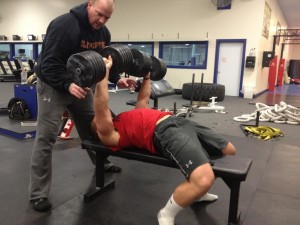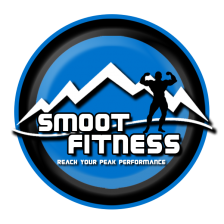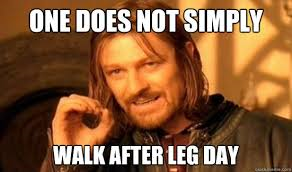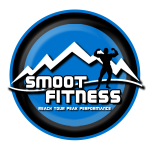Nick Smoot- Owner of Smoot Fitness
Smootfitness.com
There seems to be a trend going around promoting soreness and fatigue as leading indicators of workout success. Although soreness is a common by-product of a hard training session, is that really what we should focus on when determining whether or not we are making progress in the gym? Does our pursuit of size and strength need to leave us so exhausted that we can’t function during the rest of our daily obligations? Do we need to be so sore after training legs that we can’t descend a flight of stairs without having both hands death-gripped to the handrail? I sure don’t think so. Soreness is an inevitable component of sport and exercise, but it’s not the end all be all when it comes to judging the effectiveness of our training sessions.
Soreness Isn’t that Important
There are three reasons why soreness is not a good judge of workout success:
- The body adapts to soreness before it adapts to the training program.
- Soreness limits your ability to push yourself hard in the gym (therefore limiting performance).
- Soreness alone does not correlate with any positive changes in physical capacity or muscle growth.
In general, soreness is a result of the buildup of lactic acid, and metabolic waste caused by microscopic tears in muscle tissue. Now our body adapts to the stresses placed on it, and in my own experience, the body becomes better suited to buffer lactic acid and handle metabolic waste well before it adapts to our current training program and we start hitting plateaus.
Week one of a new program is pretty brutal; weeks two and three are not (from a soreness standpoint). Where I think many people mess up is that they jump ship from their current program the second soreness disappears, without giving the program enough time to actually provide results.
From a performance perspective, soreness is a direct hindrance to your ability to push yourself hard in the gym. I don’t know about you, but I just don’t have the same level of tenacity when I deadlift with sore hamstrings than I do when I am fresh. If you are sore, your performance will most likely suffer, and if your performance suffers, your overall progress is going to decline.
Speaking of performance, whether your performance improves, stays the same, or declines ultimately determines whether or not you are making progress. Soreness in the absence of a higher level of performance is meaningless. At best, it tells us that something is off with our programming and we are hindering our overall results. I remember hearing Strength Coach Martin Rooney say that “Anyone can make you tired. Only a great coach can get you results.” Are we getting stronger, faster, and bigger, and sore every now and again? Or are we sore all the time, with a solid performance once every blue moon? If we answered yes to the latter, something needs to change.
Always Focus on Performance
 As far as I am concerned, performance is the only judge of workout success. If our numbers are going up on the big lifts, we are getting stronger and are/will put on more muscle mass. If we are running faster miles, we are increasing our speed. If we are hitting higher vertical jumps, we are getting more powerful. If our performance absolutely sucked, with or without being sore, we didn’t make any progress. We can be sore without having good performance, and we can set a new PR without being sore. Because of this, it makes much more sense to place performance at the top of our priority lists, and assess it first when judging the effectiveness of a given training session.
As far as I am concerned, performance is the only judge of workout success. If our numbers are going up on the big lifts, we are getting stronger and are/will put on more muscle mass. If we are running faster miles, we are increasing our speed. If we are hitting higher vertical jumps, we are getting more powerful. If our performance absolutely sucked, with or without being sore, we didn’t make any progress. We can be sore without having good performance, and we can set a new PR without being sore. Because of this, it makes much more sense to place performance at the top of our priority lists, and assess it first when judging the effectiveness of a given training session.
Go for a Personal Record Each Workout
What is a sign of an increase in performance? A new PR (personal record). We should aim to hit a new PR every time we step foot in the gym, and although I wrote an entire article on the topic that can be read HERE, I will cover some of the major points down below.
There are five major ways to set a PR:
- Add more weight to the bar
- Lift the same weight for more reps
- Lift the same weight for more sets
- Take less rest time in between sets
- Lift the weight with a slower tempo
Keeping up with our progress and trying to constantly set new PRs is important because it’s a form of measurement. If we don’t know where we have been, there is no way we can make an adjustment to keep us moving forward. A new PR more often than not will make you sore, exhausted, and leave you feeling like you just went 10 rounds with Mike Tyson and came away with the knockout (it does for me anyway). But even if we aren’t sore, if we are setting PR’s on a regular basis, our programming is solid, our workouts have been successful, and we are making them gainzz!
Summing Up
We have all seen the “no pain, no gain” posters, and I was one of the worst when it came to believing that if I was able to walk without a limp the day following squats, my workout was a total failure. But when we look at all the factors, it just doesn’t make sense. The only way of making progress toward any goal is to subject the body to some form of overload, and the direct sign that we are doing that is by watching our performance steadily increase. Always remember that your body adapts to soreness before it adapts to the actual training plan. You will generally be sore the first week of a new program; you might not be the next three. Sore or not, if your performance increased in a given training session, you made progress, and therefore your workout was a success.
Contact Nick:
Twitter-Smootyn
Facebook- Smoot Fitness
Like What You See?
Get the Smoot Fitness Guide to Getting Stronger - FREE.



Leave a Reply